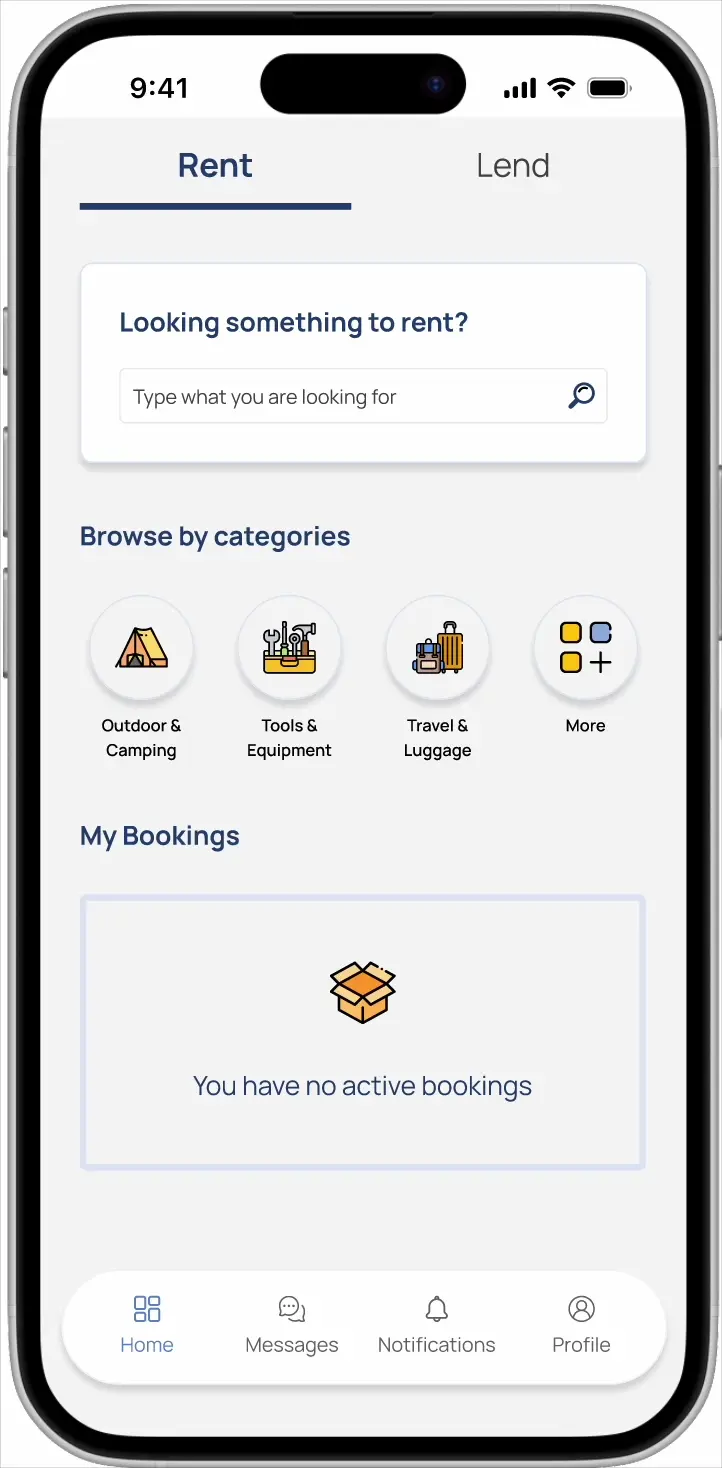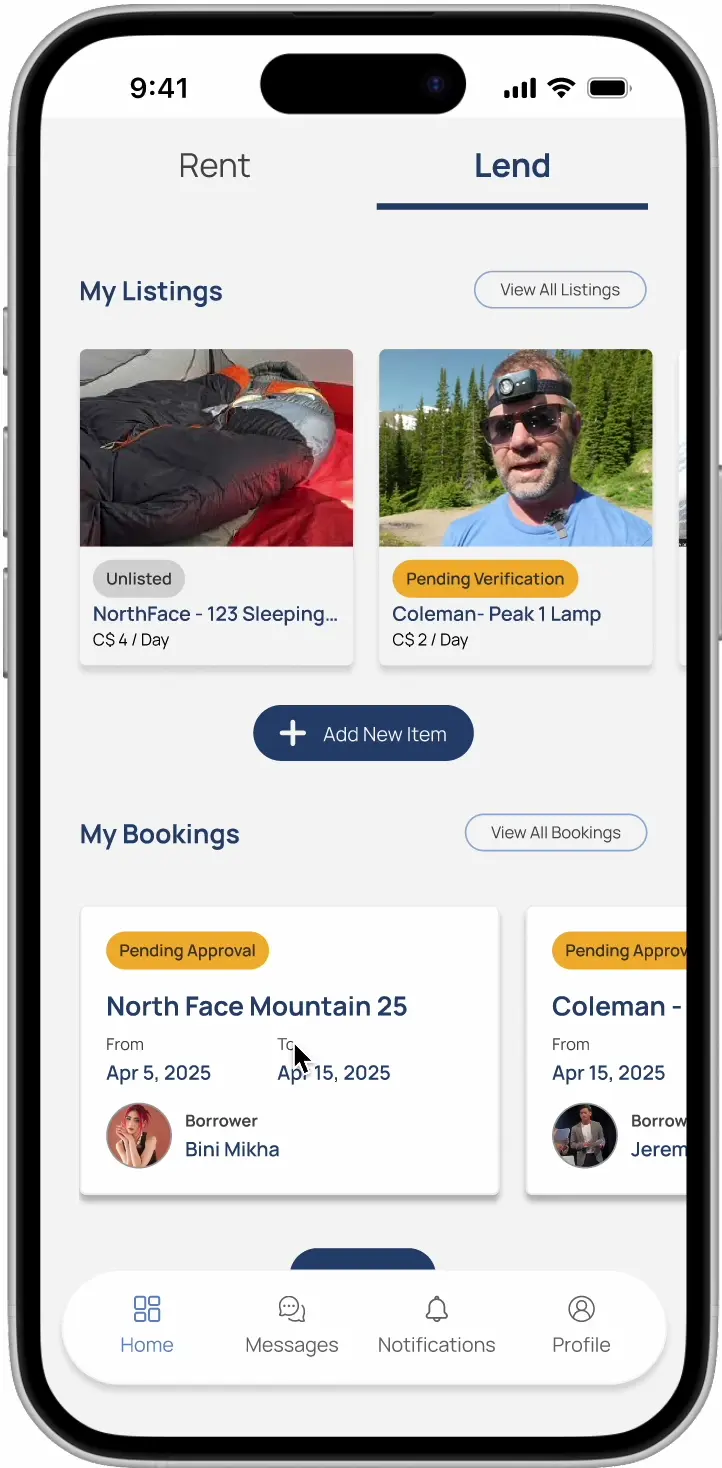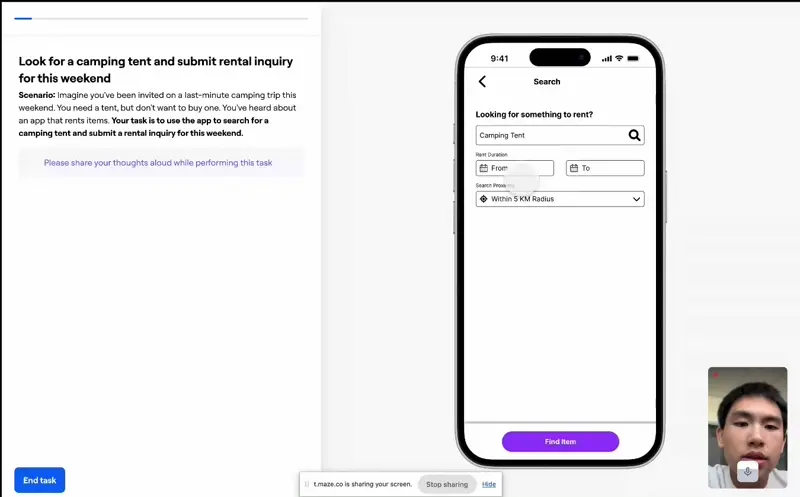

This concept was developed as part of my capstone project, where I aimed to solve a real-world problem through user-centered design.
People often need specific items to accomplish tasks or enhance experiences—such as power tools for a quick DIY project or camping gear for a weekend trip—but only once or twice. In most cases, this doesn't justify a full purchase. Naturally, we turn to our network to borrow, but borrowing from friends or family isn't always possible.
As a result, many end up buying items they rarely use, leading to regret over wasted money and added household clutter. This common dilemma highlights a growing need for a more structured, accessible, and reliable way to access items temporarily—without the cost or commitment of ownership.
How might we help people access items they need for short-term use without unnecessary purchases, while also enabling people to get more value from infrequently used items they have invested in to reduce financial strain?
The first step in addressing this problem was to validate whether people—particularly those living in small spaces or those who have experienced buyer's remorse—recognized this as a real issue that needed solving. To do this, a series of research and discovery activities were conducted to gather meaningful insights before proposing any solutions.

In-depth remote user interviews were carried out to better understand users' frustrations and how they currently address the need to access single-use items. To further empathize with users, user journeys were mapped and personas were developed, allowing the team to clearly define user behaviors, motivations, and pain points.

Key findings revealed :
Users in smaller cities face limited options for short-term rentals, often leading them to make unnecessary purchases.
Concerns around item misrepresentation, damage disputes, and unreliable lenders hinder adoption.
Borrowers worry about being held responsible for damages they didn't cause.
Insights gathered from the research phase—combined with the growing popularity of the sharing economy—revealed a shift in how people access the items they need. These services have encouraged individuals to become more resourceful and financially savvy, often choosing to borrow rather than buy.
This insight presented a clear opportunity to build a hyperlocal marketplace that connects people with rentable items within their immediate communities. While rental platforms do exist, most cater to specific niches or categories, limiting their reach and practicality.
A unified platform that offers rentals across a wide range of categories under one roof would address this gap, creating a seamless and centralized experience for both occasional borrowers and regular lenders.
A competitive analysis further exposed a key blind spot: many platforms fail to address the core concerns of both borrowers and lenders—specifically around trust, safety, and item verification. By prioritizing these issues, the product can stand out and foster lasting user confidence.
This became the cornerstone of Oopa’s value proposition—differentiating it from competitors by building trust and convenience into every step of the rental experience.



The journey from concept to product was grounded in a user-centered approach. I began by mapping user stories based on real-world scenarios—understanding the specific jobs users would “hire” the product to do, whether they were lending or borrowing an item. These insights became the foundation for every design decision.

Using the user stories, I crafted a clear information architecture that served as the blueprint of the platform. This helped define logical user flows and ensured that each interaction aligned with users' needs and expectations.

With the structure in place, I translated ideas into low-fidelity sketches and wireframes, giving shape to the product's core experience.
Design assumptions were continuously validated and refined through user feedback, allowing me to iterate early and often. This ensured that high-fidelity designs were purposeful, focused, and built on a solid foundation of tested insights.

Although this concept was developed as part of my capstone project, the process resulted in fully implementable design assets that could serve as the foundation for a real startup or interactive media business. More importantly, it uncovered valuable real-world insights throughout the journey. Here are a few key takeaways: